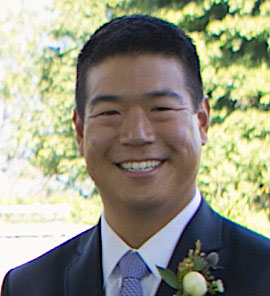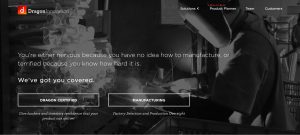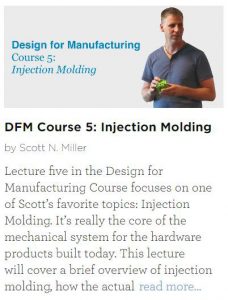
Hardware Is Hard: Nate Deschaine of Dragon Innovation on Designing and Engineering Innovative Products
Product development is much more than ideas, prototypes, design for manufacturability, production, distribution, and marketing. It’s really about connecting the dots.
We’ve all heard the horror stories: Guy meets girl. Guy and girl have a great idea, make a video, start a Kickstarter campaign that goes viral. And then…we never hear about it again, except in the tech blog obituaries. Hearts are broken.
In most of these cases, the idea is great and the product has real potential, but somewhere along the way somebody didn’t or couldn’t connect the dots when the chips were down.
Dragon Innovation has worked on products such as Pebble and Makerbot. They help startups, independent inventors, product developers, entrepreneurs, and companies make these oh-so-important connections between the steps. Let’s just say they help cross the t’s and dot the i’s so you don’t dot the t’s and end up with crossed eyes.
They offer a “Dragon Certified” badge so backers and investors can have confidence that your product can be delivered on time and at cost. They also help with factory selection and product oversight. In other words, they help people like you make sure you can keep your product’s promises.


Jason: What do you do and what are your specialties?
Nate: At Dragon I perform DFM [Design for Manufacturability] on customers’ products to provide feedback tailored to their stage of development. I also perform cost estimates on the products to help provide a baseline of their COGS [cost of goods sold] and help them understand how much it will cost to get to manufacturing.
My background as a mechanical engineer in product development has given me specialties mainly in high-volume consumer electromechanical assemblies and plastic injection molding.
Jason: When is an independent product developer not ready to hire for design for manufacturing?
Nate: They are usually too early when they do not have clear specifications of what the product is and does. Without that information it’s difficult for a consultant to understand what to design.
Jason: What are some basic things you need from developers to get started with Dragon Innovation?


Jason: What is the difference between an engineer and an industrial designer?
Nate: An industrial designer defines the usability and look and feel of a product; the engineer defines how it is made to meet the product requirements (strength, durability, etc.) while staying within the physical bounds set by the industrial designer.
Jason: What are some important questions that developers should ask when hiring for design for manufacturability?
Nate:
- Have you designed something similar to my product before?
- Have you brought similar types of products into high-volume manufacturing before?
- What is your specialty in the product development field?
Jason: What makes a good engineer or designer stand out from the rest?
Nate: An engineer/designer that stands out in my mind is one who can understand the interactions of the entire system and manipulate parts of the design to perform in a unique way without over-engineering any one part—basically being able to walk the fine line of minimal design versus multiuse parts.
Jason: What are some critical mistakes that you have seen product developers make?
Nate:
- Designing a product without specifications.
- Over-engineering single components to perform too many tasks within the product. This makes them either unmanufacturable or too expensive to produce.
- Not fully understanding the customer’s needs and designing something for themselves, not the masses.
Jason: What kind of deliverables should your clients expect from you?
Nate: This is very dependent on the type of engagement they come to Dragon for.
- For cost estimates and DFM reviews, complete detailed reports are expected.
- For RFQs (request for quote), the result is a relationship with the best contract manufacturer for their particular project.
- For ongoing project oversight, it’s clear and constant contact with the contract manufacturer through a Dragon employee as an extension of their team.


Jason: What are some challenges that your customers face when looking for manufacturers for their products?
Nate: The main challenge for our customers is the completeness of their documentation. They usually believe they are ready, but when they start to engage with us, through our process they realize they are missing a lot of important information and documentation that is necessary for an RFQ.
Jason: I had a client recently who hired a mechanical engineer for the functional design of his product and then had to hire 

Nate: The best way to do this is to have your product specification document set after your first breadboards (prototypes). Then have an experienced industrial designer define the functionality and aesthetic of the product. Finally have an experienced mechanical engineer create the detailed part breakout and finalized design.
I stress the word experienced since some ID or ME contractors cannot bring a product design to fruition—only to the 95 percent line, which is never good enough.
I recommend visiting Dragon’s website for more information, videos, and resources on this subject. As it says on Dragon’s site: “Hardware is hard. We get it.” Thanks again to Nate for visiting with us and sharing his perspectives on design for manufacturability, and thank you to Dragon Innovation for providing support and resources so hardware doesn’t have to be so hard.
Jason Post
Director of Business Development
